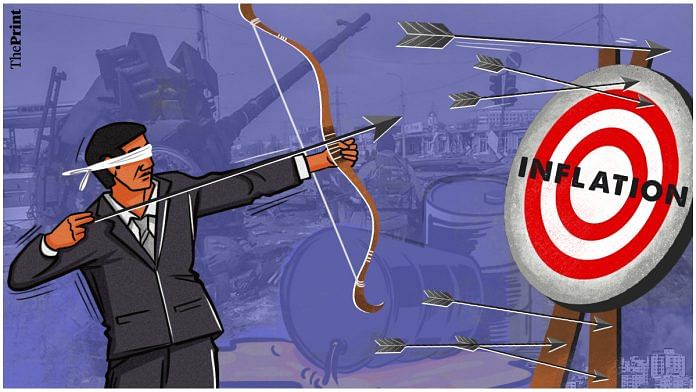The target for inflation in most advanced economies is 2 per cent. But consumer price inflation in the US is running at 3.7 per cent, in the euro area at 5.6 per cent, in Britain at 6.8 per cent, and in Japan at 2.9 per cent. In Germany, battling zero growth, it is 4.3 per cent. And in India, where inflation is typically much higher than in these advanced economies, it is almost benign at 5 per cent — though higher than the monetary policy target of 4 per cent, a number that the Reserve Bank of India (RBI) does not expect to hit in the coming quarters.
On the evidence at hand, inflation targeting works only when the world economy is normal (if there is such a thing), and demand swings up and down in small cycles that monetary policy tackles. In abnormal times, like the financial crisis of 2008 and Covid, central banks everywhere dumped the normal rules and went for solutions “out of the box”, as they say. Now it would seem that the normal rules may not be fit for purpose even in somewhat less turbulent times like the present.
Geopolitical conflicts and the new cold war are the new facts, and they have upended the oil market, plus various food and other commodity markets. Disruptions will continue as the world coalesces into competing blocs that want to relocate sourcing points. Climate-change issues impose other costs. So, prices will rise even if demand is weak. Monetary policy in this situation has no answers. Those in charge of it try to hide their impotence by coining slogans like “higher (interest rates) for longer”.
That doesn’t hide the damage. Despite the US and China doing well, there is a global slowdown. And there’s the possibility of knock-on disruption as banks and company balance sheets get stressed by debt becoming more costly. Investment gets hit because it would have to deliver higher returns to match the higher cost of capital. Heavily indebted countries with rising interest burdens feel the pinch more than others. Higher interest rates in the economic capitals also roil peripheral markets, as global money heads for perceived safety — affecting markets like India’s.
In many countries, yields on government debt paper are at record levels. They would be higher still if central bankers were to take their mandate seriously and shoot for 2 per cent inflation. But they have uniformly held their hand because raising rates further from their already high levels would impose huge economic costs. Implicitly, they have accepted that they cannot carry out their mandate because they don’t have the tools. So they fudge.
Monetary policy is at a crossroads. In its latest annual Report on Trade and Development, the UN Conference on Trade and Development (UNCTAD) calls on central banks to give up their stated 2 per cent target and, when framing policy, to consider other issues like the debt crisis, rising inequality, and slowing growth. Similar arguments were made in India when the 4 per cent target was put in place. Namely, that inflation has several causes, excess demand being just one. Therefore, the RBI does not have the policy tools to achieve its single-point target. Some argued that it would be wrong to even try, because other macro-economic goals are equally important — the point that UNCTAD has made.
India is better placed than most. It is not heavily indebted. And growth is good. That should give the RBI room to raise rates and shoot for the 4 per cent target. Yet the RBI holds its hand even as it predicts that the inflation target will not be reached for the next three quarters. The saving grace here is the flexibility built into the RBI’s mandate, allowing for a 2 percentage-point band on either side of the 4 per cent target. But that elbow room could become an excuse for avoiding necessary decisions.
The question poses itself: How relevant is a 4 per cent inflation target if it has not been hit since 2019? And what if the occasions when the target does get hit are mere happenstance? In India as much as elsewhere, does inflation targeting really work?
By special arrangement with Business Standard.



